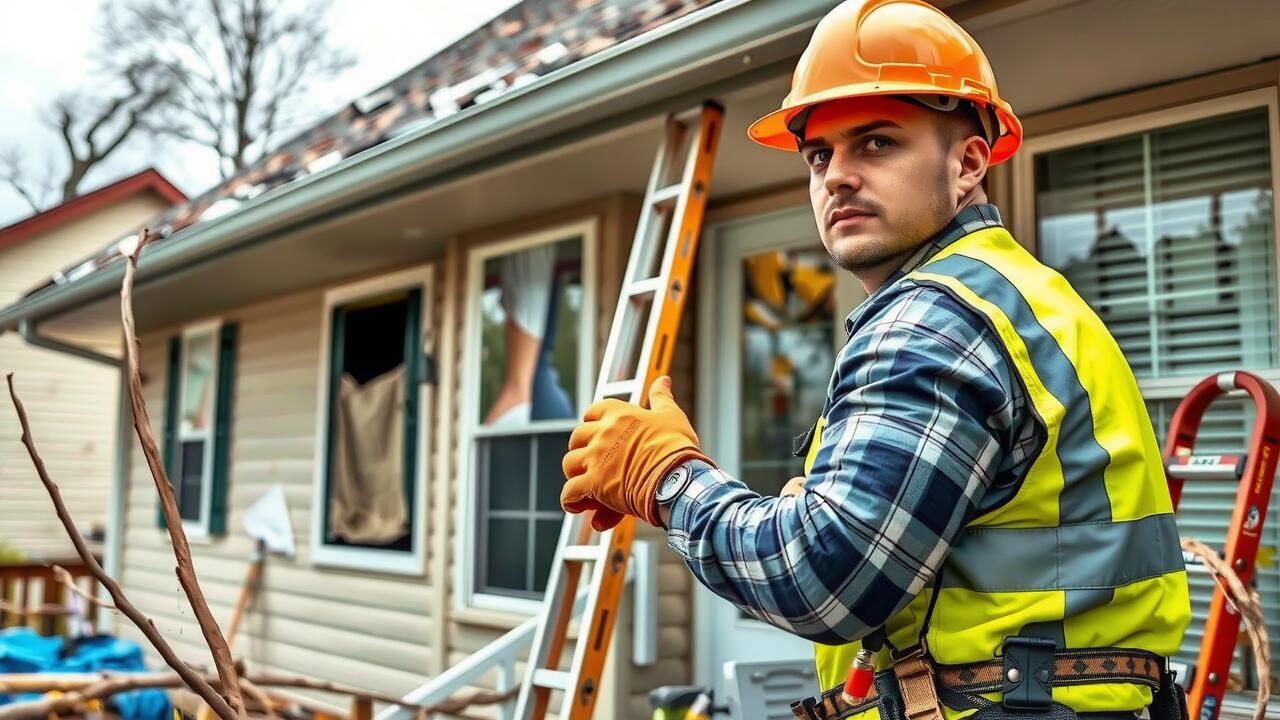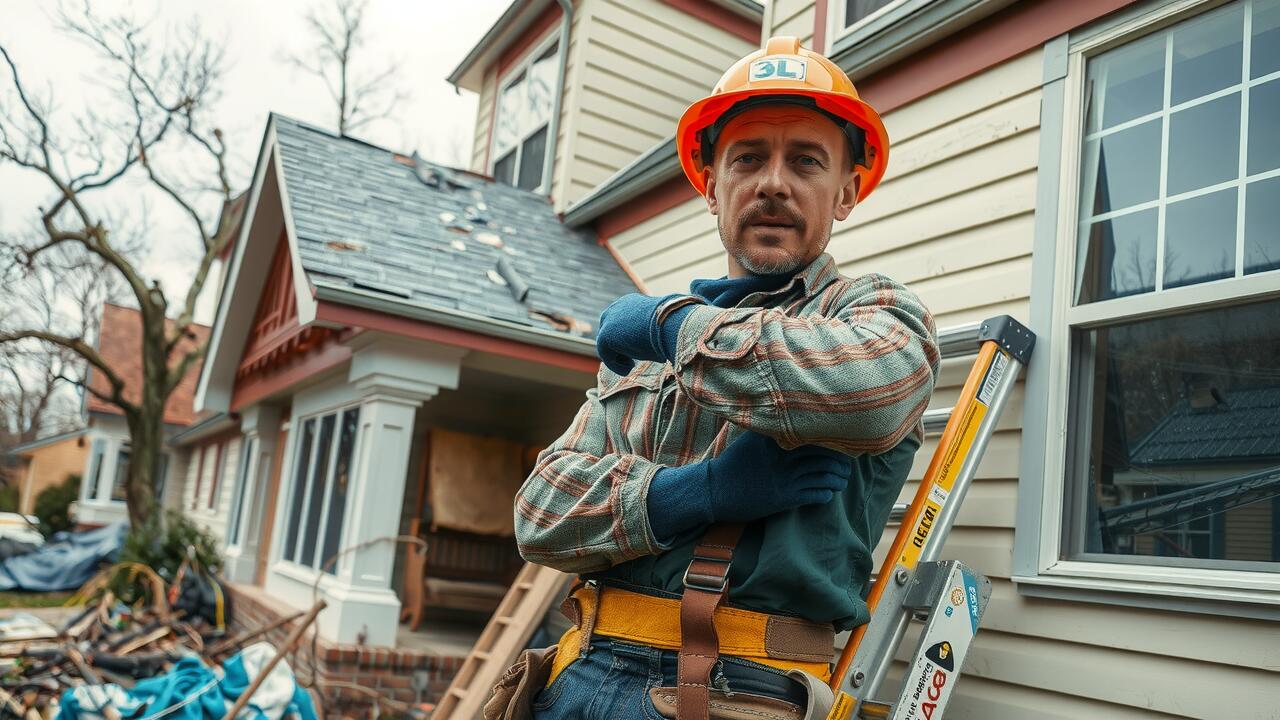
Insurance and Storm Damage Claims
Understanding insurance coverage for storm damage can be complex. Property owners should carefully review their homeowners’ policies to determine what types of storm damage are covered. Many policies provide for wind and hail damage but may exclude certain events unless specific riders are included. Familiarizing oneself with these details is essential for an effective claims process. When a storm strikes, having accurate documentation of the damage can significantly impact the claim’s outcome.
As homeowners prepare to file a claim, working with a reputable storm damage restoration service can be beneficial. These professionals often assist in documenting the damage and navigating the claims process. Storm Damage Restoration in Grove City, Ohio, companies typically have experience liaising with insurance adjusters. They can help ensure that all necessary information is provided, which may support a successful claim approval. Accurate assessments and follow-up can streamline the restoration process while minimizing stress for homeowners.
Navigating the Claims Process
The process of navigating storm damage claims can be intricate and often overwhelming for homeowners. Understanding the policy details is essential before filing a claim. It’s crucial to document all damage thoroughly by taking photographs and keeping a record of all communications with your insurance company. This documentation serves as evidence that supports your claim and helps ensure you receive a fair assessment when seeking assistance for storm damage restoration in Grove City, Ohio.
Homeowners should also be aware of time-sensitive aspects of the claims process. Many insurance companies require prompt notification of the damage and may have specific deadlines for filing claims. Familiarizing yourself with your policy timeline can make a significant impact on the outcome of your claim. Engaging with a local expert familiar with storm damage restoration in Grove City, Ohio, may ease this process and provide guidance tailored to your particular situation.
Common Types of Storm Damage
Storms can unleash a variety of destructive forces on homes and properties, leading to significant damage. Wind damage is one of the most common issues, often resulting in torn-off shingles, broken windows, and downed trees. Heavy rain can also lead to flooding, causing water damage that may compromise the integrity of the structure and promote mold growth. Hailstorms present another form of peril, leaving dents in siding and damage to roofs that necessitate immediate attention.
In addition to wind and water damage, fallen trees represent a serious threat during storms. This can lead to crushed roofs, damaged vehicles, and disrupted power lines, increasing the urgency for restoration services. Homeowners seeking Storm Damage Restoration in Grove City, Ohio, must also be vigilant about the condition of their exterior, as debris can create hazards that require prompt removal and repair. Understanding these common types of storm damage can help in preparing for potential claims and restoration efforts.
Identifying Different Damage Scenarios
Storm damage can manifest in various forms, each requiring specific assessment and remediation strategies. Common types of storm damage include roof leaks from heavy rain, water intrusion due to flooding, and structural issues caused by high winds. Delaying identification and reporting of these damages can lead to exacerbated problems, creating further complications during the restoration process. Homeowners should be vigilant and document any visible signs of damage immediately to facilitate more effective restoration efforts.
In Grove City, Ohio, understanding the local climate is essential for identifying storm damage scenarios. Severe thunderstorms, hail, and ice storms can create unique challenges for property owners. Recognizing the implications of each type of storm is vital for an effective response. Homeowners engaging in Storm Damage Restoration in Grove City, Ohio, should consult professionals for accurate assessments to ensure that all areas of damage are addressed adequately and efficiently.
Steps in the Restoration Process
The first phase in the storm damage restoration process involves assessing the extent of the damage. Professionals conduct a thorough inspection of the property, checking for structural issues, water intrusion, and potential hazards. This initial evaluation helps in formulating a comprehensive restoration plan tailored to the specific needs of the home or business. Accurate assessment is essential for determining the materials and methods required for effective restoration. Many homeowners seeking Storm Damage Restoration in Grove City, Ohio, appreciate the importance of a detailed inspection to ensure no aspect of the damage is overlooked.
Following the damage assessment, the restoration team begins the cleanup phase. This often includes removing debris, drying out the affected areas, and addressing any water damage with specialized equipment. Depending on the severity of the storm impact, additional repairs might involve replacing roofing, siding, or even structural elements of the building. Homeowners can expect consistent communication throughout the process, allowing them to stay informed regarding the progress and any next steps needed in their Storm Damage Restoration in Grove City, Ohio.
What to Expect During Restoration
During storm damage restoration in Grove City, Ohio, homeowners can expect a comprehensive assessment of the property. Professionals will evaluate the extent of the damage, documenting areas that require immediate attention. This initial inspection allows for a targeted restoration plan, ensuring that both structural and aesthetic concerns are addressed. Equipment may be brought in early on to mitigate issues like water infiltration.
Once the assessment is complete, the restoration process will typically begin with cleaning and drying affected areas. Technicians will remove debris and any damaged materials to prevent further complications. This phase often involves specialized tools for effective moisture removal and sanitization. Throughout the process, communication with the homeowner is key to ensure that expectations are clearly outlined and met.
FAQS
What should I do immediately after a storm causes damage to my property?
After a storm, ensure your safety first. Take pictures of the damage for documentation, contact your insurance company, and reach out to a storm damage restoration service for immediate assistance.
How can I navigate the insurance claims process for storm damage?
Start by reviewing your insurance policy to understand your coverage. Document all damage with photos and notes, then contact your insurance agent to initiate a claim. Consider hiring a public adjuster if needed.
What are the most common types of storm damage I should be aware of?
Common types of storm damage include roof leaks, water intrusion, broken windows, fallen trees, and siding damage. Each type can require different restoration approaches.
How can I identify the specific type of storm damage to my property?
Look for visible signs such as water stains, missing shingles, cracks in walls, or debris around your property. It may also be beneficial to consult with a professional who can accurately assess the damage.
What steps are involved in the storm damage restoration process?
The restoration process typically includes an assessment of the damage, water extraction, drying and dehumidification, cleaning and sanitizing, and finally, repairs and restoration to return your property to its pre-damage condition.
